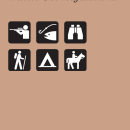· Wildlife observation and photography, to include landscape photography, are permitted except within areas designated as closed for the protection of swans or other sensitive wildlife. Please do not disturb, approach, or follow wildlife in the quest for the perfect picture. Moose with calves can become particularly dangerous. Trumpeter swans are extremely sensitive to disturbance and may abandon nests or young. Please do not approach nesting swans.
· The Centennial Mountains are a favorite photo subject. They lose most of their snow by late June.
· Mountain bluebirds are a favorite of photographers and Refuge visitors. They will be brightly colored from the time they arrive in March until they leave in the fall and present themselves for photos all along the roadways.
· Waterfowl and shorebirds will have all arrived by May and will be in brilliant colorful breeding plumage. Swans, waterfowl, and shorebirds will begin to appear with young in mid-late June. Try your luck at finding and photographing a cinnamon teal drake.
· Sandhill cranes present themselves for photographs throughout May and even afterwards, and will have their colts in June. While the colts are small, cranes get secretive and distant.
· Moose calving generally commences in late May, while antelope, deer, and elk are a couple weeks behind. These animals and their young can begin to be seen to photograph later in June.
· Most warblers arrive in June, except that Audubon (yellow-rumped) warblers will arrive in early-mid May. Yellow warblers will be moving about in the willows during summer - photographers must be quick to catch them, as they move about frequently.
· Wildflowers on the valley floor usually peak the last week of June through the first week of July. Some of the wildflowers you can expect to see and photograph are lupines, blanketflower, arrowleaf balsamroot, red Indian paintbrush, and phlox to name a few. Despite peaking in mid summer, different species flower throughout from May until the September frosts set in.
· No place in Montana has better red, orange, and yellow sunrises than the Refuge. They make for magnificent photos. If you're lucky and your shutter speed and trigger finger are fast enough, you might catch a summer storm with a bolt of lightening in a mountain background.
· Golden aspen leaves will peak on the Refuge around 20 September, give or take a few days, unless a hard frost freezes them off and turns them black overnight, which commonly happens at such a high altitude. Willows also turn bright yellow, chokecherries become scarlet red, and serviceberry bushes start as orange before an intense red-violet.

